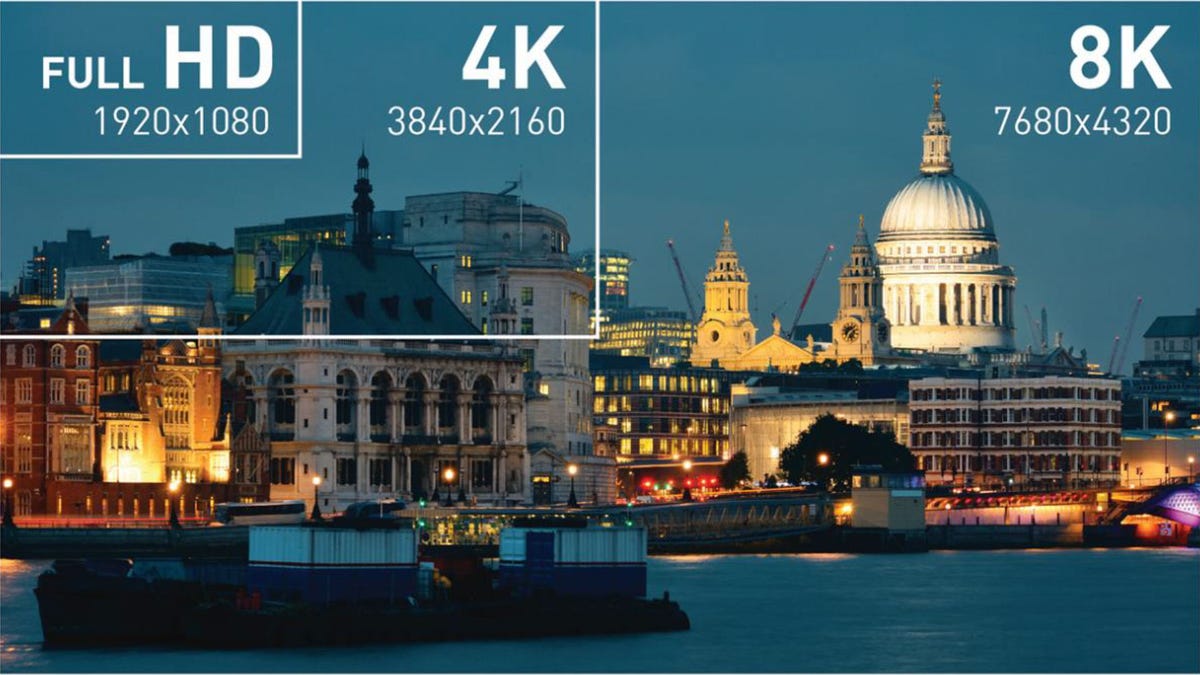TV industry paves way for humongously high-res video
The newest HDMI video technology will deliver 8K video. That's overkill for the vast majority of us, but it means improvements will also come to color, dynamic range and video smoothness.
If you just got a new TV, chances are good it's a high-resolution 4K model. But the electronics industry, ever eager to get you to upgrade yet again, has laid important groundwork for televisions that quadruple the pixels of 4K.
The HDMI Forum, a group of electronics companies that includes everyone from LG and Sony to Google and Netflix, has announced plans to release HDMI 2.1 by the end of June. On Wednesday at CES 2017, HDMI backers said it means that TVs and computer monitors will be able to display video at a remarkable 7,680x4,320 pixels.
Dubbed 8K, such screens will offer four times the pixels found in 4K models -- and 16 times the pixels in mainstream 2014-era TVs with HD.
If that sounds like overkill, it is. But there are reasons that so many pixels will be useful in some situations.
In the real world, our eyes can distinguish only so much detail. That's why it's often hard to perceive the step up from HD video at 1,920x1,080 to 4K video at 3,840x2,160 pixels.
So why bother with 8K video at all? For one, large computer monitors can benefit from lots of pixels when displaying crisp text and graphics. Dell certainly thinks so. Its UltraSharp 32 Ultra HD monitor, a 31.5-inch screen with 8K resolution, is coming to market in late March for $5,000.
Likewise, wraparound displays and other immersive environments can demand a lot of pixels. Higher resolution will help VR headsets that today suffer from pixelated virtual reality views. And plenty of professionals need lots of pixels. The video that goes into 4K or HD movies is often shot at higher resolution, and new camera technology is moving toward 8K. Case in point: Ambarella, which creates image-processing chips for widely used cameras like GoPro action cams, just added 8K support to its product line.
HDMI 2.1 "48G" cables will transfer data at up to 48 gigabits per second for high resolution, fast frame rates and better color and richer tones.
There are also other improvements coming in HDMI 2.1 besides 8K video support. Its gargantuan data-transfer capacity -- 48 gigabits per second compared with 18Gbps for today's HDMI 2.0 and 10.2Gbps for older but still widely used HDMI 1.4 -- opens up other display options.
One of those options is 4K video shown at 120 frames per second -- a fast frame rate that can smooth motion in action scenes or video games. In fact, HDMI 2.1 can handle 8K and 10K video at 120fps, HDMI Forum said.
With a wider color gamut, HDMI 2.1 also broadens the range of hues that can be shown. There's more detail, too, with a boost to 16 bits of color data per pixel, a big step up from today's high-end video with 10 bits.
HDMI 2.1 also offers an improvement in dynamic range, which is the ability to show details in both shadowy and bright areas simultaneously. Current video technology can show high dynamic range (HDR) imagery, but its styling is set once for an entire video. HDMI 2.1 can change HDR settings throughout a video.
Progress in HDMI faces some challenges, though. For one thing, you'll need new TVs, monitors, PCs and "48G" cables to take advantage of the features.
For another, HDMI ports may become scarcer on PCs as the new USB Type-C port expands to handle video duties like connecting external monitors and projectors. At present, USB-C only can handle the earlier HDMI 1.4 version of the technology. And Apple's newer MacBook and MacBook Pro laptops don't even have HDMI ports.


